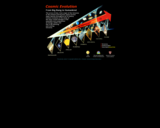CYBER BULLYING
Cyber bullying is bullying that takes place over digital devices like cell phones, computers, and tablets. Cyber bullying can occur through SMS, Text, and apps, or online in social media, forums, or gaming where people can view, participate in, or share content. Cyber bullying includes sending, posting, or sharing negative, harmful, false, or mean content about someone else. It can include sharing personal or private information about someone else causing embarrassment or humiliation. Some cyber bullying crosses the line into unlawful or criminal behavior.
The most common places where cyber bullying occurs are:
Social Media, such as Facebook, Instagram, Snapchat, and Twitter
SMS (Short Message Service) also known as Text Message sent through devices
Instant Message (via devices, email provider services, apps, and social media messaging features)
Email.
WHERE IS CYBERBULLYING OCCURING ?
Manuals to educate the public, teachers and parents summarize, "Cyberbullying is being cruel to others by sending or posting harmful material using a cell phone or the internet." Research, legislation and education in the field are ongoing. Research has identified basic definitions and guidelines to help recognize and cope with what is regarded as abuse of electronic communications.
Cyberbullying involves repeated behavior with intent to harm.
Cyberbullying is perpetrated through harassment, cyberstalking, denigration (sending or posting cruel rumors and falsehoods to damage reputation and friendships), impersonation, and exclusion (intentionally and cruelly excluding someone from an online group)
Cyberbullying can be as simple as continuing to send emails or text messages harassing someone who has said they want no further contact with the sender. It may also include public actions such as repeated threats, sexual remarks, pejorative labels (i.e., hate speech) or defamatory false accusations, ganging up on a victim by making the person the subject of ridicule in online forums, hacking into or vandalizing sites about a person, and posting false statements as fact aimed a discrediting or humiliating a targeted person. Cyberbullying could be limited to posting rumors about a person on the internet with the intention of bringing about hatred in others' minds or convincing others to dislike or participate in online denigration of a target. It may go to the extent of personally identifying victims of crime and publishing materials severely defaming or humiliating them.
Cyberbullies may disclose victims' personal data (e.g. real name, home address, or workplace/schools) at websites or forums or may use impersonation, creating fake accounts, comments or sites posing as their target for the purpose of publishing material in their name that defames, discredits or ridicules them. This can leave the cyberbully anonymous which can make it difficult for the offender to be caught or punished for their behavior, although not all cyberbullies maintain their anonymity. Text or instant messages and emails between friends can also constitute cyber bullying if what is said or displayed is hurtful to the participants.
The recent use of mobile applications and rise of smartphones have yielded to a more accessible form of . It is expected that cyber bullying via these platforms will be associated with bullying via mobile phones to a greater extent than exclusively through other more stationary internet platforms. In addition, the combination of cameras and Internet access and the instant availability of these modern smartphone technologies yield themselves to specific types of cyber bullying not found in other platforms. It is likely that those cyber bullied via mobile devices will experience a wider range of cyber bullying types than those exclusively bullied elsewhere.

